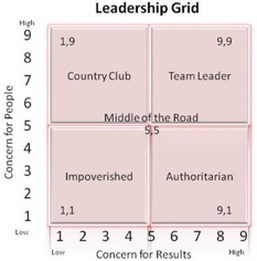 It’s been mumbled in the halls, whispered behind closed doors, and exaggerated by a younger, less patient teaching corps. “Older teachers just can’t handle new technology”. It’s simply too complicated, and too hard to grasp for those who came before the Internet generation. Well, research may argue a different point. In an attempt to address how new technologies are affecting an aging teaching corps (who may not have had exposure to technology during their collegiate training or early formative teaching years), Eshet-Alkalai and Chajut tested age-related differences with three groups of twenty participants. Groups ranged from late high school to 40 years old with equal pairs of males and females. The study leveraged modern technologies through tests of photo-visual thinking skill, reproduction thinking skill, branching thinking skill, and informational thinking. The main findings were that the younger participants performed significantly better than the older participants in skills that required mastery and experience with computer programs. On the other hand, the older adult participants performed significantly better in tasks that required critical and creative usage of technology. In other words, it’s a draw. There seem to be equal advantages to both age groups, which neutralize the theory that younger learners are more apt to be successful in the use and integration of new technologies. Based on the results from this study, it is evident that experience with technology, and not age-related development accounts for the observed changes in digital literacy skills. Results also show that the ability to find information using technology or digital tools does not guarantee an educated or smart use of the information or digital tools. Or, in simple terms, provided adequate time for experience and learning, you “can” teach an old dog new tricks. Tommy Reddicks Indianapolis, IN
2 Comments
 Teachers have an undying thirst for time, clear communication, resources, professional freedom, and higher salary. Amidst these desires, there is often a feeling of, “If I could just be left alone to do this the way I feel it should be done, everything would be better.” But, teaching is an extremely difficult job. Individual students have individual learning needs and styles, which then demand individual teaching accommodations. Those accommodations also vary by subject. So, teachers must make endless decisions on delivery and preparation in every hour of the teaching day to compensate for the differentiated environment they work in. This requires an intelligent, flexible, and highly skilled individual. Unfortunately, with the myriad of subjects to teach, and a vast array of curricular tools, teachers are often presented with a room full of children at the start of the school year with only basic directions pertaining to “how” and “what” to teach (http://prospect.org/article/teacher-autonomy-paradox). While some teachers thrive in the “ultimately malleable” gray area, other teachers carve out a unique path that may not align with their co-teachers or the following year’s instructional plan. So, while there are certainly identifiable pieces in the core subjects that are necessary for completing a grade, in systems with unchecked autonomy, how subjects are taught can vary greatly from teacher to teacher. When this is the case, the actual student learning is in danger of becoming too random. Compounding that idea is the idea of autonomy in assessment. Freedom to assess, or freedom to choose what needs assessed is a great liberty for a teacher, but a great curse on a student body if left too subjective. So, how does a teacher maintain autonomy and a sense of creativity, while still allowing for a cohesive standards-driven educational system? This paradoxical question can cripple the effectiveness of a school if not answered in a way that the entire teaching staff can comprehend. First off, the school should have a curriculum map tied to standards, that clearly outline the specific content areas to be taught, length of time for each content area, and calendared schedule for each area of content. This helps establish boundaries around the “what and when” in a classroom. Additionally, grade level teams should be lesson planning in tandem. This allows teachers within a grade level to share ideas and coordinate plans so that their classroom instruction is relative across their grade level. But, how do we ensure that teachers will assess in a way that measures true student mastery or conceptual fluency of the instruction? The answer to this question involves backwards design (Wiggins & McTighe (1998). Understanding by Design.). With backwards design, the goal of the instruction and assessment always comes before the lesson plan. In this fashion it is important for teachers to understand the state standard that their content supports. If the standard is “Math: Numerical Operations”, then the content should represent the standard, AND the classroom assessment should measure capacity against the requirement of that standard. In order for this to work, the teacher must work backwards by starting with the standard, understanding the assessment, determining the appropriate content, and finally, getting creative with writing the lesson (http://www.carla.umn.edu/assessment/vac/CreateUnit/p_1.html). Too often, the “cool classroom idea” is the driving force behind a lesson or unit. In these cases, the state standards needing taught, or qualities of assessment to measure capacity or growth can become afterthoughts in the educational process. And, when standards and assessments are afterthoughts in your educational program, so is your overall school performance! In other words, autonomy will represent a problem if standards and assessments are allowed to become a low priority. To sum up, teachers crave autonomy, but ground rules must be set to ensure that both curriculum mapping and skillful standards-based lesson planning are happening within the creative autonomous environment. Administrators and lead teachers must ensure that these processes are in check by regularly reviewing detailed lesson plans and cross checking curriculum maps against day-to-day classroom instruction. And, while the term “micromanaging” gets abused as a negative verb in education, it is a necessary component when ensuring that your school systems are setup in a way that allows for creativity and autonomy. In other words, one must micromanage in order maintain autonomy. Paradox? Perhaps. But, the micromanagement is in the setup and maintenance of a creative, high-functioning, autonomous system. Tommy Reddicks Indianapolis, IN  While practical experience can be invaluable for the US educator, it is important for teachers and teacher leaders to utilize tools and techniques proven to be successful through research. In their article, “How Teachers Can Use Scientifically Based Research to Make Curricular and Instructional Decisions”, Paula and Keith Stanovich (2003) point out that teachers are just like research scientists. Consider the following scenario presented in their article: “…they (teachers) evaluate their students’ previous knowledge, develop hypotheses about the best methods for attaining lesson objectives, develop a teaching plan based on those hypotheses, observe the results, and base further instruction on the evidence collected.” This cycle very closely resembles the scientific method. Moreover, when laid out in this manner, it should seem very familiar to most classroom teachers. Therefore, if teachers and research scientists share a similar scientific process, it would seem a probable conclusion that both would rely on the latest research to guide their process. This however is often not the case in the classroom. With the pace and demand of a classroom, teachers find it hard to manage time in a way that allows for their own education. In a 2006 survey* including 21,000 teachers in the state of Kansas, 61% of the teachers didn’t think they had enough non-instructional time to do their jobs, let alone consider spending time researching best practices. 98% percent of teachers surveyed also said they spent time on school-related activities outside their regular workday. Thirty-seven percent of those said they spent more than 10 hours a week outside their regular workday. Given those statistics, one can easily see how our teachers struggle with time. It is also easier to understand why teachers struggle with keeping current on educational research. There is clearly very little time available for more than their own instructional process. So, how do we help our educators apply the latest research to their classroom instruction when time limits their ability to do more than teach? This question does not come with a package answer, but there are many ways to address the issue. Consider the following strategies: 1. Utilize school administration and staff leadership to source and present “relevant” educational research to the teaching staff. 2. Ensure a percentage of all staff professional development is dedicated to the study and discussion of the latest educational research. 3. Establish a Professional Learning Community (PLC) utilizing goals for learning established by the learning community. (Rotate PLC responsibilities so that the study and learning is done by rotating groups, and then shared out for discussion.) 4. Build connections in the greater educational community so that educational research can be presented by outside experts to the teaching staff as a service to the school. 5. Create a staff newsletter designed to highlight the latest research in education. 6. Create partnerships with local colleges or universities, offering up classrooms for potential educational research projects. 7. Encourage staff members pursuing a masters or doctoral degree to conduct their research at their own school site. While it may never be possible to create a system where educators have extra time to spare, it is important to ensure our educators still have access to current information revealed by the scientific research community. Likewise, it is also important to find ways for our true field-researchers in education (our teachers) to share their work and discoveries with those in the more traditional scientific realm. Tommy Reddicks Indianapolis, IN * 2006 Kansas Teacher Working Conditions Survey  Leadership is a constant struggle between the use and influence of power and the need to develop respect. While many leaders have found success through a process of intimidation and rudeness, others have found success through fair and respectful oversight. Nevertheless, research is telling us that the fair approach is not necessarily the most successful. In the Harvard Business Review article, Why Fair Bosses Fall Behind, the title question is addressed. Lab studies and responses from hundreds of corporate decision makers and employees began with the age-old question, “Should leaders be loved or feared?”. Going a step further, the researchers in this study also asked, “Can you have respect and power?” The findings were clear. It’s hard to gain both. To solidify that point, the study also yielded another consistent piece of information expressed in a range of industries: “Decisions about high-level promotions most often center on perceptions of power, not of fairness”. According to the study, a very similar preference was demonstrated by students in a lab setting. Each witnessed a “manager” telling an employee about a compensation decision. Manager A communicated the decision rudely, Manager B with respect. The students were then assigned to work in a group led by the manager they’d observed; afterward they rated their leader’s power. Rude Manager A consistently scored higher than respectful Manager B—even though there was no difference in how they’d treated the participants themselves. By observing both the rude and respectful behavior, students had enough sensory influence to create a true bias. It is easy to argue that extremes on either side of power or fairness are faulty, but what does this research tell up-and-coming leaders who are working to solidify the push and pull of their leadership style? It suggests that a leadership approach devoid of power may struggle, especially when a stronger example of power already exists as a comparison for others in the workplace. It would also suggest that a very serious, direct approach when beginning a leadership position would be taken more seriously than an approach of fairness, kindness, and mutual respect. This discussion brings up the familiar question, “Is it better to be liked or respected?” Research is telling us that leaders who push hard for policy, process, and results in spite of relationships or kindness have a distinct advantage over those who choose the inverse path. Research is also telling us that “being liked” is secondary to success. Therefore, it is easy to understand the influence of a stronger, meaner leader. However, while these “superleaders” may demand more respect and higher achievement in the workplace, employee burnout can quickly become a side effect. C. K. Marshida’s article Employee Dissatisfaction Leads to Burnout, discusses this issue and suggests that employees are the backbone of the organization. She says that when the employees are fractured, the organization cannot stand strong. In Susan E. Jackson and Randall S. Schuler’s article Preventing Employee Burnout, some solutions for avoiding employee burnout are proposed. They say, In addition to increasing employees' feelings of control, participation in decision making may help prevent burnout by clarifying role expectations and giving employees an opportunity to reduce some of [their] role conflicts. Conclusion It is clear that stronger, more direct leaders will be perceived as more influential and more successful. However, strong leaders should leverage strategies for creating employee buy-in and employee empowerment. This will help to avoid employee burnout and sustain a stronger organization over time. It may be hard to act in a way that puts relationships and friendships in jeopardy, but if relationships and friendships are the backbone of your leadership style, you may find it harder to gain respect and authority. In considering the development of positive relationships and friendships in the workplace, it is better to understand them as a welcome side effect (when they happen) to a leadership style. It is important to keep the idea of fairness in terms of “what is fair for the organization” and not “for the individual”. While this can be perceived as calloused to individual employees, the consistency of a global vision helps remove bias or narcissism from the chain of command. Tommy Reddicks Indianapolis, IN  It’s easy to self-declare leadership. Circumstance and confidence can propel many different people into leadership. It’s also easy to say, “Now there’s a good leader!” or, “that person would make a great leader”. But, it’s harder to say what leaders actually “do” that make them successful. Even harder, how do they maintain success over time? Whether intentionally or inherently, true leadership comes from a solid understanding of Group Dynamics. While many of us have not had formal training in Group Dynamics, it is essential that a rudimentary understanding be in place. If you look online you are likely to find a definition for Group Dynamics to be something like: Group dynamics refers to a system of behaviors and psychological processes occurring within a social group (intragroup dynamics), or between social groups (intergroup dynamics). The definitions can quickly become confusing psychobabble, so I like describing Group Dynamics as a simple balancing act. For instance, imagine balancing a marble on a wooden cutting board. As the marble starts to roll in any direction, you must compensate by lifting that edge of the board to stop the marble from falling off. Bringing the marble to a complete stop on the board means that you can effectively manipulate the height and angle of each side until balance is achieved through what you physically see and what you learn by moving the board (through muscle memory and trial and error). Effective leadership through Group Dynamics is not unlike this balancing act. The marble represents your human resources or human capital (your staff, students, and even parents). The cutting board represents your toolset (communication skills, rapport building, systems, protocols, etc.) and the individual trying to maneuver the cutting board to make the marble stop rolling is you, the leader. So, when asking how I define leadership? My simple answer is, “Balanced Group Dynamics”. Proper leadership has the capacity to bring the marble to a stop no matter how often the cutting board is adjusted, and how often the marble begins to roll in any errant direction. That involves efficient systems of communication, effective diplomacy, a driving sense of inspiration, and consistent follow through. Or, (in reduced psychobabble) dynamically operating a group so that all members of the group can move in the same direction, maintaining the system’s overall balance. So, the next time you recognize admirable leadership, stop for a moment and change your focus. Instead of focusing on the leader, watch the group being led. Look to see how the group is compensating and maintaining the stability of the system? Sometimes it is very obvious how group supports have been scaffolded and delegated, and other times, the dynamic is subtler. But, undoubtedly, the group is well trained and ready to ebb and flow as required. So, when you have begun to observe the group being led and are beginning to draw some conclusions, try this activity: Reflect on the procedures or protocols necessary for maintaining the balance demonstrated by the group. Then, try to write out a map of their system of supports or chain of command. Use a napkin, or a scrap of paper and map it out, or just simply play it out your mind. (I have found that this activity will hone your focus and will help refine your ability to inherently identify key components to successful systems in Group Dynamics.) Finish each reflection by asking yourself what role you would most comfortably play in that dynamic system of leadership. Would you be the marble, cutting board, or the leader? No matter what your answer, what would you do differently with your role in that system? In closing, successful leadership rarely happens accidentally. Effective leaders have an established system, where group dynamics ensure success over time. Poor leaders are architects of poor systems and will tend to swing unpredictably from extreme success to extreme failure, if they achieve success at all. When carving your own personal leadership style, investing energy into the study of behavioral systems and psychological processes (Group Dynamics) will yield high returns. Try to take a more intentional and investigative role in your own Group Dynamics. That focus will elevate your level of awareness of what is being done in “your” system to ensure the marble stays still. Over time, you may be surprised to find out that you have more control over that little marble than you ever thought was possible. Tommy Reddicks Indianapolis, IN
|
Categories
All
AuthorTommy Reddicks has been a teacher and administrator in Wyoming, Arizona, Washington, Colorado, and Indiana since 1995. Archives
July 2016
|